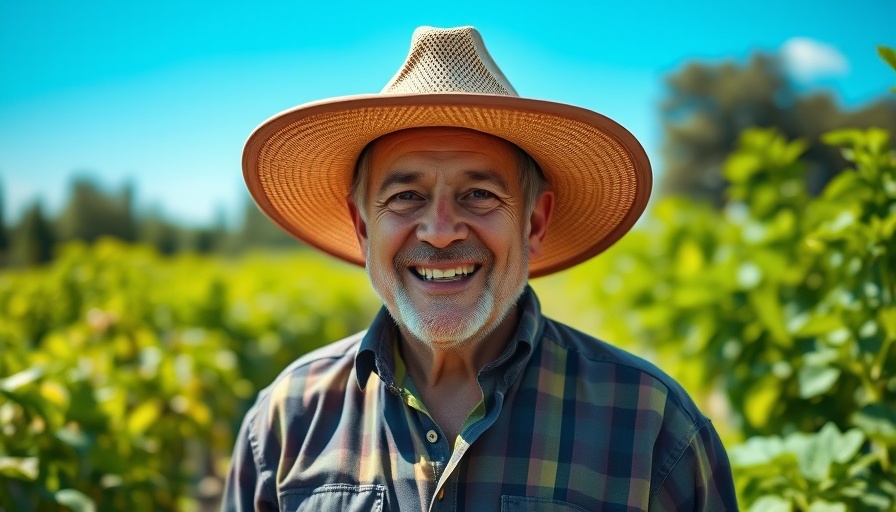
Why Patience Pays Off When Harvesting Onions
As any gardener knows, the anticipation of harvest can be a tricky balance between eagerness and patience. In the latest episode of The Garden Quickie, host Jeff from The Ripe Tomato Farms shares a crucial lesson for all those growing onions: resist the temptation to harvest early. Onion bulbs, while they may look ready—plump and picture-perfect—require more than just surface appearance to ensure a successful long-term storage experience.
In 'Don't Harvest Onions Too Early - Garden Quickie Episode 261', the discussion dives into the timing of harvesting onions, exploring key insights that sparked deeper analysis on our end.
The Science Behind Onion Growth and Harvesting
While onions are visually enticing when they reach their peak size, proper timing in harvesting hinges on a few key indicators. Similar to garlic, onion foliage gives away a vital clue. Jeff explains that for onions to be ready, at least 50% of their green tops must have browned and died. Additionally, the neck of the onion, which is where it connects to the roots, should soften and bend, a process known as ‘breaking the necks.’ Understanding these biological cues is essential for ensuring that your harvest is not just a feast for today but a bounty that can last for months.
Why Storage Matters
The key reason for waiting? Storage longevity. Onions, unlike root crops, are composed of modified leaves. These layers need adequate time to dry out; ideally, two to three outer layers should dry completely before harvest. If you harvest prematurely, your onions could spoil in just weeks, rather than lasting for months. The extra days spent in the ground can mean the difference between a meal tonight and a well-stocked pantry for the long haul.
A Lesson in Gardening Patience
This patience required in gardening not only enhances the quality of onions but also reflects broader life lessons about delayed gratification. This concept resonates deeply as families engage in gardening together—watching growth, learning responsibility, and appreciating the fruits of their labor over time. For young gardeners, this lesson about patience can be enriched with deeper discussions about food systems and health.
Gardening Tips: Timing is Everything
One actionable tip for gardeners is to keep a journal that tracks the growth stages of your onion plants. Not only can it record the physical observations of foliage and bulb development, but it can also serve as an emotional reflection on your gardening journey. How did it feel to resist early harvesting? What did you learn? This practice can enrich the overall gardening experience, transforming it from merely a survival skill into a cherished family tradition.
Practical Insights for Lasting Harvests
In addition to patience, consider employing some other gardening tips to ensure a successful harvest season. Regular monitoring of soil moisture, pest control, and understanding your local climate’s effects on growth can all contribute to planting a robust onion crop. Utilizing raised beds for optimal drainage and experimenting with companion planting will also yield beneficial results.
Conclusion: Grow Your Knowledge Alongside Your Plants
Every gardener knows the thrill of harvesting, but it requires a gentler hand on the reins of impatience. By recognizing when to harvest onions, you’re not only ensuring a rewarding experience but also promoting healthy living through sustainable practices. This journey of gardening isn’t just about growing food; it’s a comprehensive exercise in patience, learning, and family bonding.
If you’re interested in maximizing your gardening potential, why not take a moment to subscribe to The Ripe Tomato Farms for more insightful gardening tips? With each episode, you can cultivate your knowledge alongside your plants!
 Add Row
Add Row  Add
Add 




Write A Comment